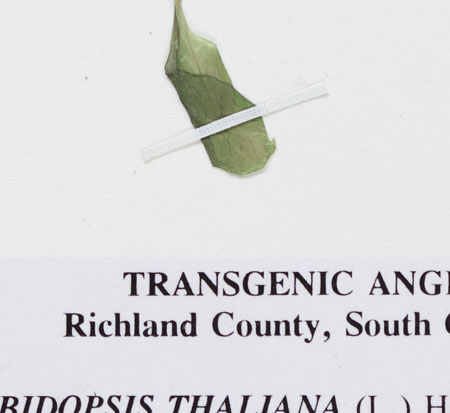Transgenic Life found in the Smithsonian Institute
Arabidopsis thaliana is a small unremarkable plant found growing along roadsides, in fields and wastlands of the northern hemisphere. Its apparent simplicity and relatively quick growing cycle made is a good candidate for researchers studying genetics during the middle part of the 20th century. In the 1970′s Arabidopsis thaliana’s life and habitat changed rapidly. Researchers at Stanford University had developed a technique for using bacteria to insert foreign genes into the genome of Arabidopsis. In doing so, Arabidopsis become the first “transgenic” plant. With the advent of the commercial biotech industry in the 80′s, the familiar plant began taking up residence in climate controlled research labs all over the world. It is now considered one of the “standard model organisms” which scientists use to try and understand life, and engineers use to try to find new uses for life.
A single specimen of Transgenic Arabidopsis thaliana rests in the species’ “United States” collection folder in the botany collection at the Smithsonian. Wedge amidst its wilder relatives, it is an oddity amongst its closest kin, but also within the Museum of Natural History on the whole where it remains possibly the only genetically engineered specimen within the collection.
Source: The Center for PostNatural History
